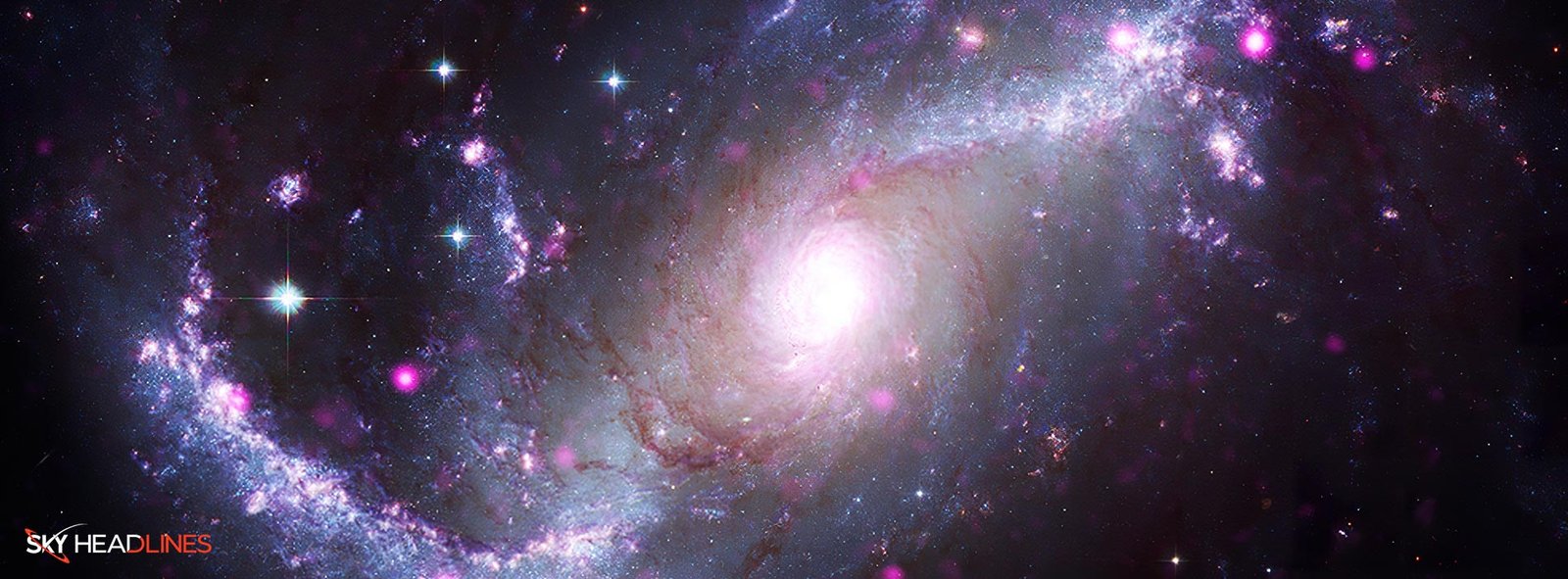Step into a breathtaking cosmic realm as you witness the mesmerizing beauty of four composite photos capturing the cosmic wonders obtained by NASA’s Chandra X-ray Observatory and James Webb Space Telescope. You can catch a glimpse of this cosmic wonder two galaxies within these frames, a nebula, and a star cluster. Each image combines Chandra’s X-rays — a type of high-energy light — with previously disclosed Webb infrared data, both of which are undetectable to the naked eye. Data from NASA’s Hubble Space Telescope (optical light) and the decommissioned Spitzer Space Telescope (infrared) are used, as well as data from the European Space Agency’s XMM-Newton (X-ray) and the European Southern Observatory’s New Technology Telescope (optical). These cosmic beauties and details are made available by mapping the data to human-perceivable colors.
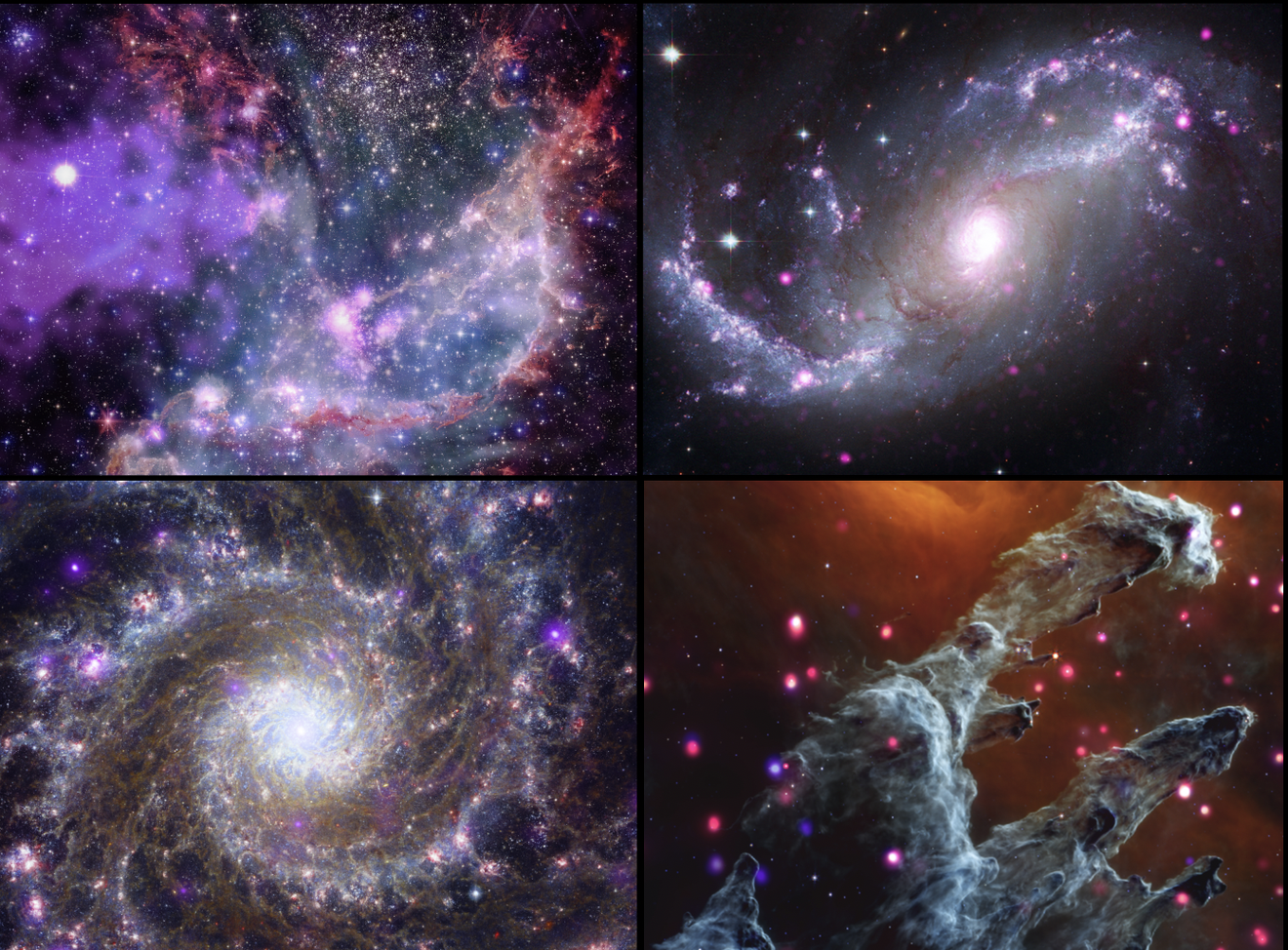
What is NGC 346 and how does the Webb telescope depict the gas and dust surrounding Cosmic Wonders?
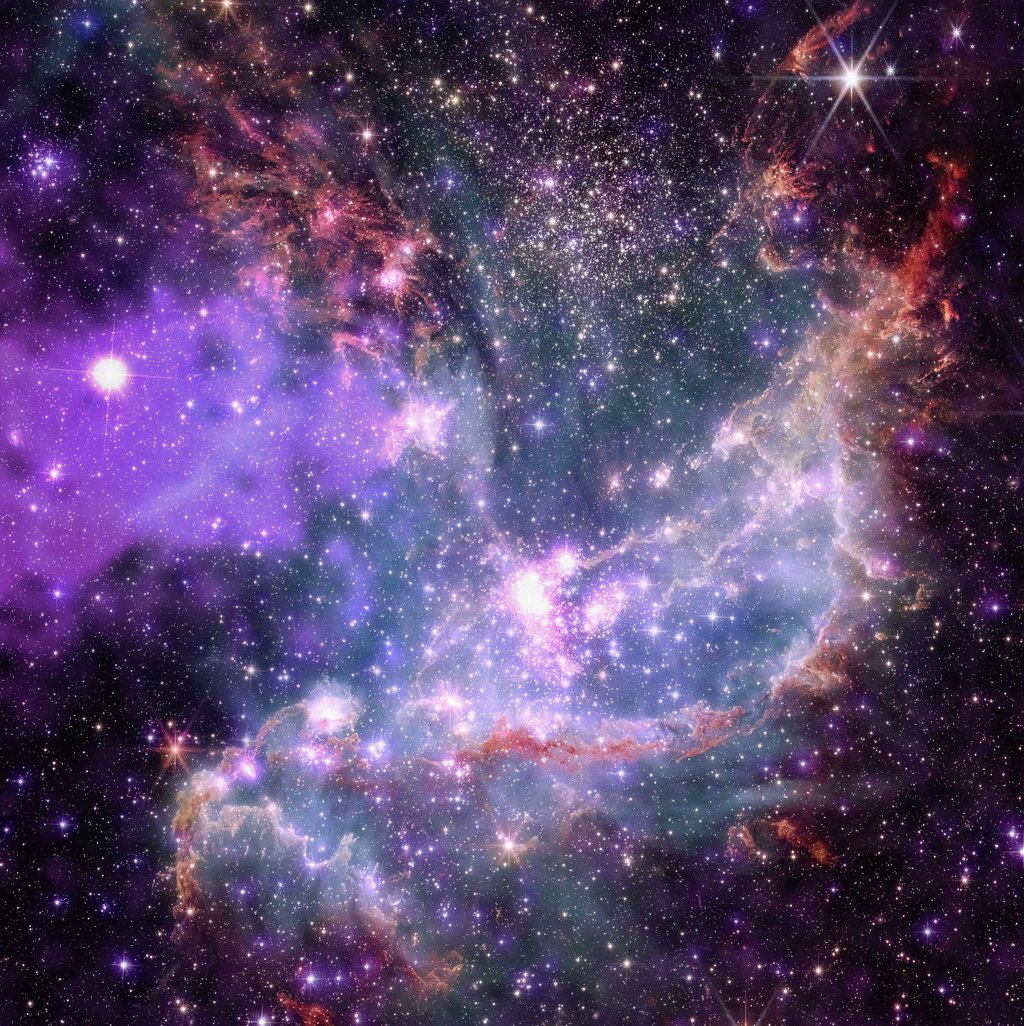
About 200,000 light-years from Earth, in the Small Magellanic Cloud, is a star cluster known as NGC 346, showcasing cosmic wonders. Webb depicts plumes and arcs of gas and dust used as source material by stars and planets during their formation. The purple cloud seen with Chandra on the left is the remnants of a huge star’s supernova explosion. The Chandra data also indicates young, hot, huge stars with tremendous winds erupting from their surfaces. Along with supporting data from XMM-Newton and the ESO’s New Technology Telescope, additional Hubble, Spitzer, and data are included.
What cosmic wonders does NGC 1672 hold?
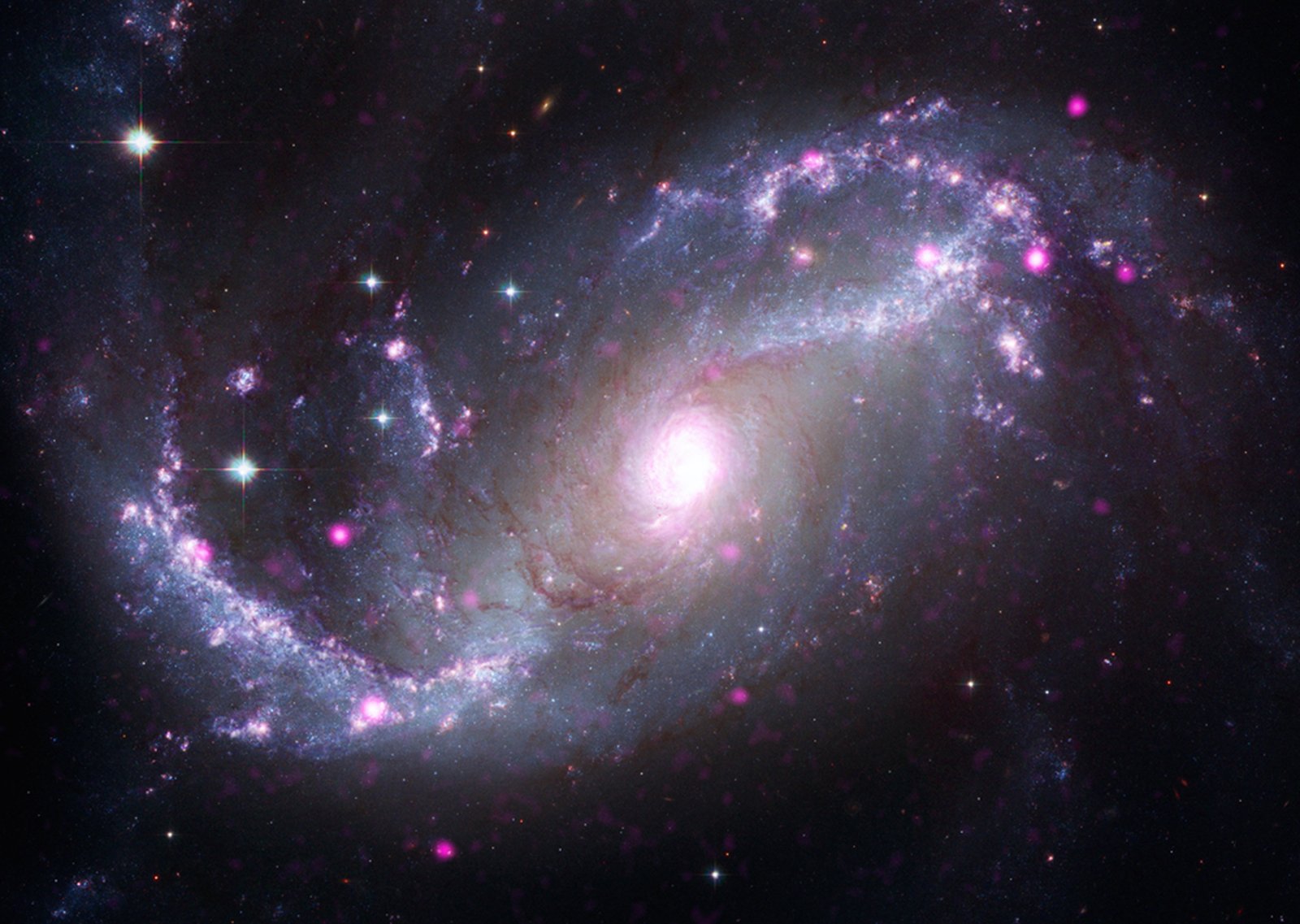
Just like NGC 346 is also an NGC 1672 a spiral galaxy is one of the cosmic wonders, however, it is classified as a “barred” spiral by astronomers. The arms of barred spiral galaxies are typically in a straight band of stars across the center that encloses the core in regions close to their centers, in contrast to other spirals that have arms that twist all the way to their core. The Chandra data show compact objects such as neutron stars or black holes sucking material from partner stars as well as relics of exploding stars. Hubble data (optical light) fills in the spiral arms with dust and gas, while Webb data reveals dust and gas in the galaxy’s spiral arms.
What is M16 (Cosmic Wonders) and how does the Webb telescope depict the gas and dust surrounding it?

Messier 16, often recognized as the Eagle Nebula, unveils cosmic wonders in the form of the renowned “Pillars of Creation.” The Webb image depicts black columns of gas and dust enveloping the few remaining newborn stars. The Chandra sources, which appear as dots, are young stars that emit a lot of X-rays.
What is the significance of Messier 74 and how does the Webb telescope reveal the characteristics of gas and dust within the galaxy?
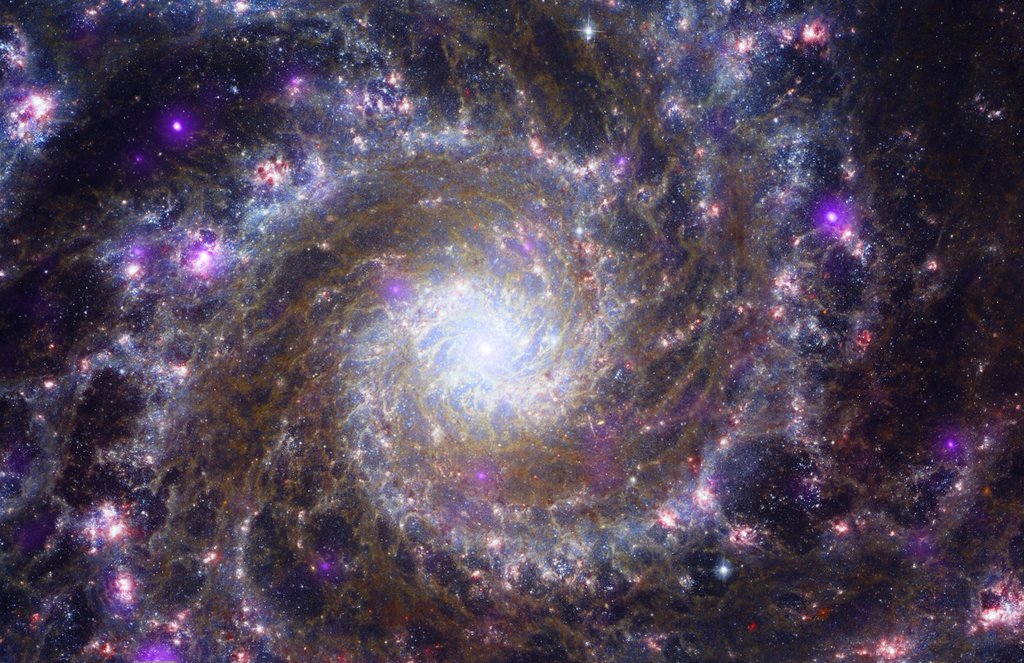
One of the other cosmic wonders Messier 74, which we can view directly from Earth, is a spiral galaxy just like our own Milky Way. It is approximately 32 million light-years away. Messier 74 is known as the Phantom Galaxy because it is less visible with tiny telescopes than other galaxies in Charles Messier’s famous catalog from the 18th century. Infrared data from Webb highlights gas and dust, whereas X-ray data from Chandra highlights high-energy activity from stars. Additional stars and dust are visible in Hubble optical data along the dust lanes.


